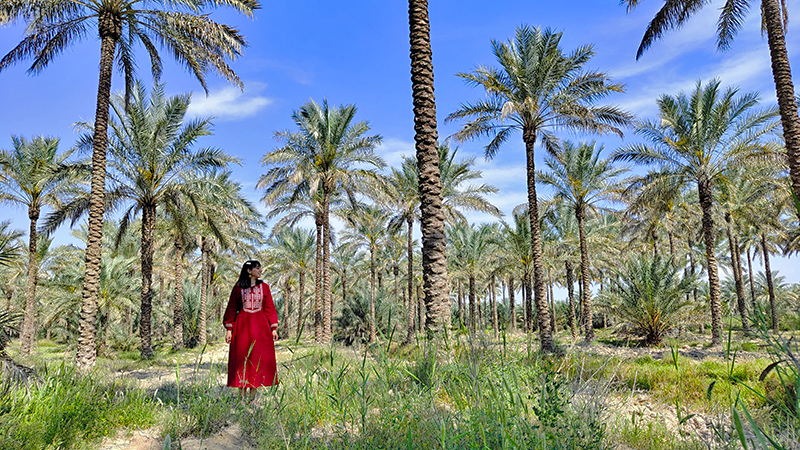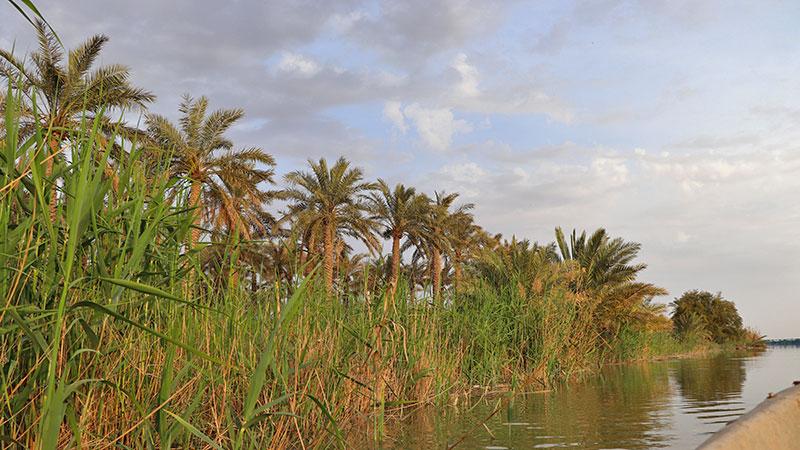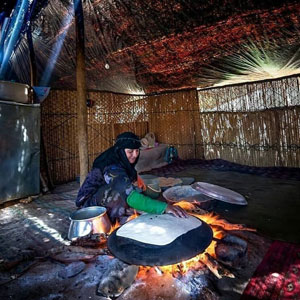 Signin with Google
Signin with Google Signin with Facebook
Signin with Facebook Culture
CulturePersian Date, a Food from Heaven

An imposing tree resembling a human being
Date palms existed in Iran since ancient times. The date's exact origin is unknown, but it seems to be cultivated in Iran about 4000 BCE. The palm tree is sacred; it is also interpreted as a sign of friendship, peace, and prosperity in Persian cultural myths. They are a symbol of prosperity, fertility and the ability to rise above conflicts. Once the tree's head is cut off, it will no longer grow, and the trunk will start to become unstable and eventually die, just like human beings. It is interesting to know that palms are counted by the counting unit “Person” and it is not strange if Iranians treat the palm trees like a living human.
Palm trees can grow to 23 m high, and people need to climb up the trunk to pick the dates in the harvest season called Khorma Pazoon in Iran. Khorma Pazoon happens in the hottest season and times of the year, usually in August. The fruit of this generous tree varies from rich red to golden bunches. They have thin skin, a sweet taste and hard seeds. They belong to the family of berries, where the entire fleshy part is edible.

The art of ethnic
The date is of great economic and cultural importance in Iran and the Middle East region. There are plenty of different products made from the palm tree. From the leaves, are made some nice baskets such as Kapou-Bafi in Khouzestan province. Also, from the fibre, are made goods like boxes, and ground clothes called Sis-Bafi in Boushehr Province. And these are just a few handmade arts produced by the residents of places that benefit from date palms.
The best climate for cultivating palm is in the hot desert regions of the world. Date palm needs to have its feet in the water and its head in the fire of the sky", says a local. Iran is the second-largest producer of dates after Egypt, followed by Algeria, Saudi Arabia, and Pakistan. The majority of dates grow in the southern strap of the country such as Kerman, Sistan and Baluchestan, Khuzestan, Bushehr and Hormozgan.

A source of nutrition
The date has been an integrated part of a human's diet since ancient times. They used it in their food, serving in mourning ceremonies and death anniversaries, during the holy month of Ramadhan and as a side dish for food with cold nature (fish, milk, etc.) The date is an excellent source of nutrition such as fibre, vitamins, iron, protein and more. For pregnant ladies, Khorma is a portion of great food and those who want to lose weight consider date palms as a main dish.

Khorma is a Persian word for date and an essential ingredient in Iraninan's southern cuisine. There are two types of date products. The first one is the date-based products such as rice dates (Khorma Polo) and date omelettes. They are typically homemade and in small portions. Some of these are easy to make, like the Persian date omelette. All you need to do is take a frying pan and put it on the stove. Fry chopped onions with dates first and then eggs in the pan and cook for a few minutes to set the egg. You can serve this easy, high-energy food with a few walnuts for a healthy breakfast or brunch. Another great dish is the rice date. Different recipes are available depending on the region, and their preferences in taste, but it usually consists of lentil beans, walnuts, milk, butter, minced meat and different spices like saffron and cinnamon. They are all mixed with rice in layers ready to be served with the popular Mazafati dates. From all the great dishes made with date, few stand out more than others. One is Kolompeh. Kolompeh is a cookie filled with dates in the middle, specially made in the province of Kerman. This nutritious cookie has no added sugar and fits perfectly in a healthy diet, especially for vegetarians.

On the other hand, there are other commercial products with dates as their main ingredient operating on large scales, for instance, date vinegar, date alcohol, date seed oil and Persian date syrup. These products are also produced in smaller amounts for personal use at home, such as date vinegar.
Persian date types and varieties
There are plenty of different types of dates in Iran. Before talking about different kinds of dates in Iran, it is good to know that Khorma refers to the completely ripe ones. The unripe ones are called kharak whereas the nearly ripped ones are called Rotab. Qasb (Persian dried date palm) is not like other dates; it goes from kharak to the final stage, without turning onto Rotab. It is almost impossible to mention every kind of Date in Iran since there are more than 400 varieties. Kabkab, Mazafati, Piarom, Rabbi, and Zahedi are a few more popular and more important ones.
Home to KabKab date palm is the city of Behbahan in southwest Iran. This date has a high-quality sweet taste and is used for industrial or direct consumption. Another type is the Mazafati date, which mainly grows in the city of Bam and Jiroft. This date is the most popular one in large cities in Iran. The southern provinces benefit significantly in terms of their regional economy. Piarom is the most expensive date and suitable for people with diabetes since the sugar is fructose. Now if you are looking for a high-grade date with a chocolate texture, you should go for Rabbi. This date is mostly cultivated in the great province of Sistan-Baluchestan province. Finally, the cheapest and most accessible kind of date is called Zahedi. This kind is mainly grown in Bushehr's lovely city and is used primarily for vinegar and alcohol products.
By Maryam Mobarhani / TasteIran



